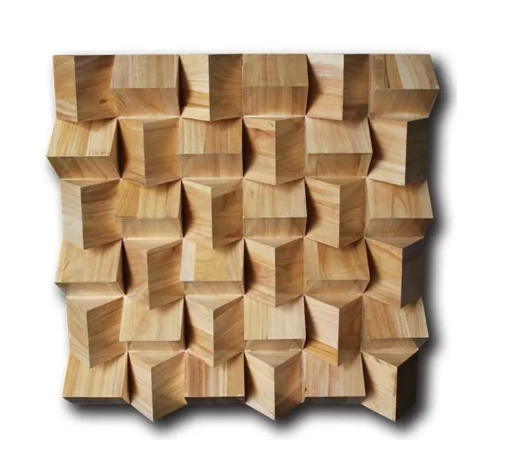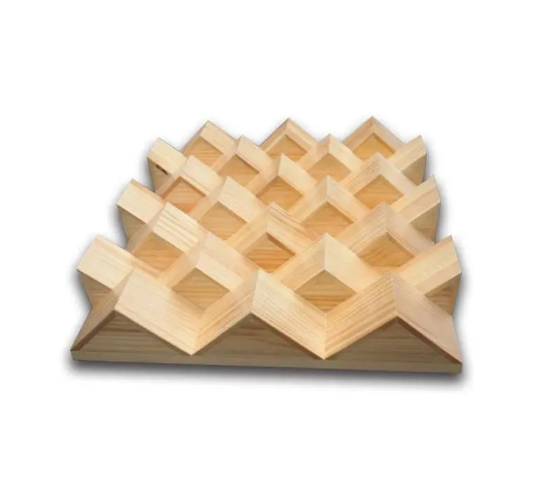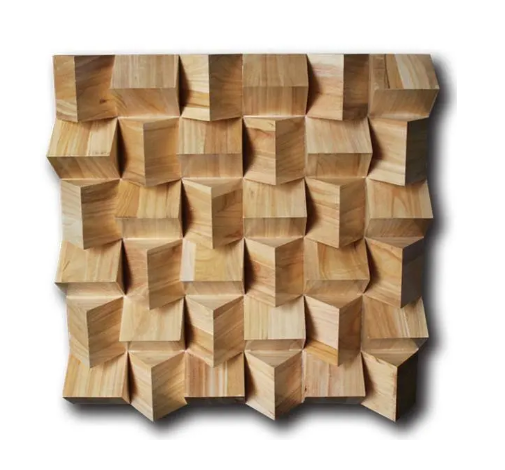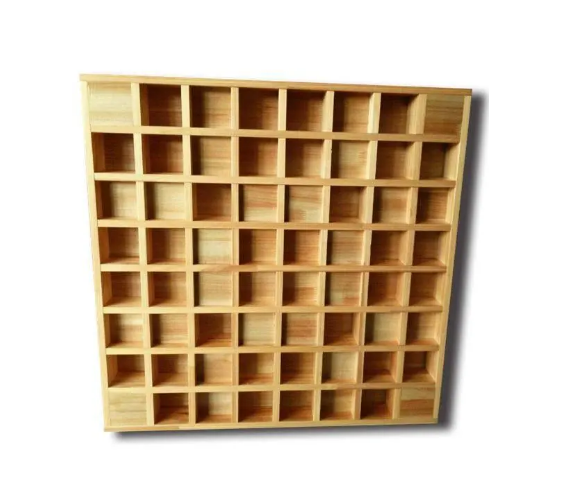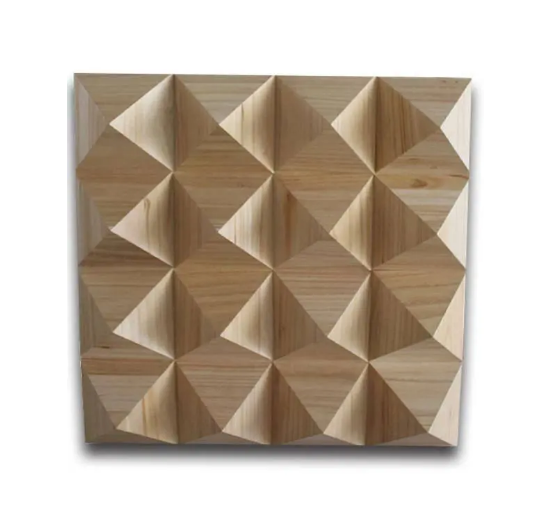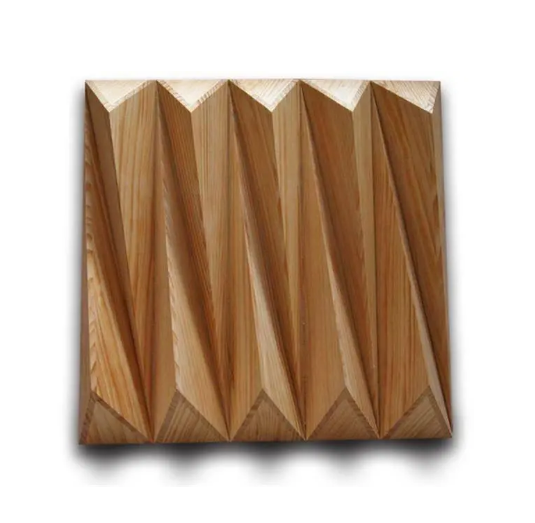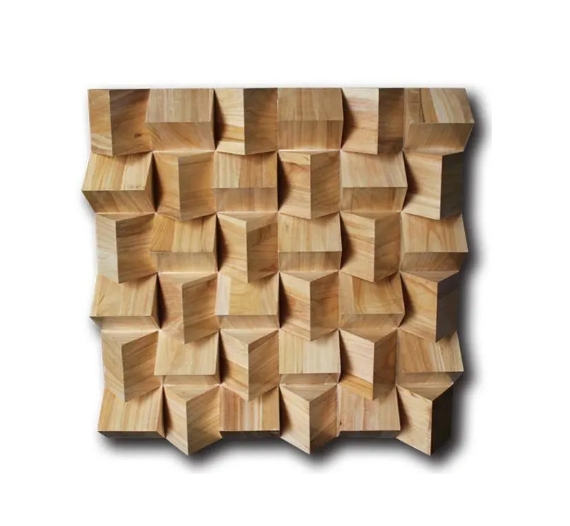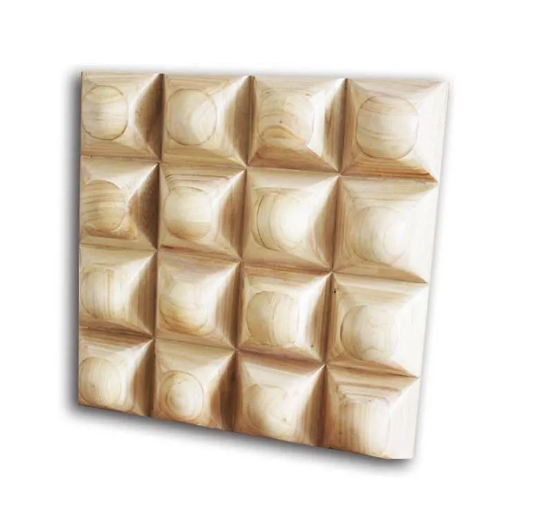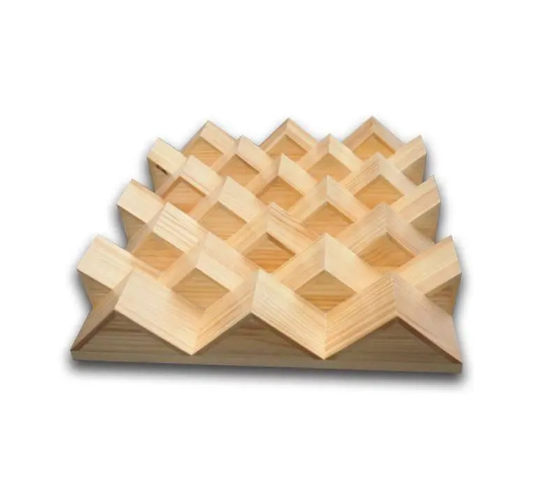My Centro Shop
Wood Sound Diffusor/600mm x 600mm/Thickness: 50mm-70mm
Wood Sound Diffusor/600mm x 600mm/Thickness: 50mm-70mm
Couldn't load pickup availability
This is an indent product. Lead Time is Twenty (20) Business Days. (Business Days=Mondays to Fridays)
-Colors can be customized depending on your preference-
Sound striking an absorber – like our Polyester or Acoustic panel are being absorbed similar to water hitting a sponge gets soaked up. Rooms treated with absorption materials are considered as acoustically ”dead” or ”neutral".
Diffusion on the other hand ”scatters” or ”shatters” sound. The most basic analogy might be water hitting the underside of a cupcake pan. The water is scattered in many different directions. Sound hitting a diffusor is reflected, but controlled such that a certain range of frequencies will be scattered randomly in all directions.
There are different types of diffusors classified into two (2) broad categories:
I. Scientific Diffusion. For example Quadratic Residue Diffusors or Primative Root Diffusors. These are diffusors that are designed with a specific number sequence in mind. The father of modern diffusion is Manfred Schroeder. His equations and number series for diffusion are the most widely applied. Scientific diffusors come in many shapes and sizes. They can be 2 or 3 dimensional. 2D diffusors scatter sound horizontally or vertically.
A 3D diffusor both horizontally and vertically. The efficiency of diffusion is not as easy to quantify as absorption is. Absorption has been calculated since the early 1900s using methods developed by Wallace Sabine. It is a very well-known method that results in absorption coefficients and NRCs – numbers that generally vary between 0.0 and 1.0 (but could go higher than 1.0) with the higher rating signifying a better absorber.
The Audio Engineering Society has recently developed a similar rating for diffusion. It is a standard that quantifies the performance of a diffusor using a 0.0 to 1.0 rating like absorption – the higher the ”diffusion coefficient,” the better the diffusor. Not all diffusors have been tested in accordance with this new standard.Kingkus Diffusor panel have and perform very well. (Numbers are available upon request.)
II. Controlled Reflection. Some would argue that this is not a form of diffusion at all. ”Barrel” diffusors, pyramidal diffusors, Hemi-cylindrical diffusors fall into this category. Basically, the science behind these redirectors of sound is that they minimize parallel surfaces and therefore increase the diffusiveness of sound in the room.
Diffusion is most effective in larger rooms. A minimum requirement is that the longest dimension of the room must be at least 12 feet.
If you feel ”oppressed” in rooms that have been heavily treated with absorption, you might be a candidate for diffusion – control without the ”deadness” of absorbers.
Live Rooms, particularly where drums or ensembles (such as choirs or orchestras) are being recorded, are great candidates for diffusion.
The ceiling of a Control Room may benefit from diffusion (provided the height is greater than about 8 or 9 feet). This is particularly applicable if you are mixing a lot of acoustic instruments, ensemble music, jazz, etc. (I.e., a MIDI studio probably wouldn’t benefit as much.)
Good diffusion can get expensive. If you are on a tight budget, you might be better off with all absorptive materials, or a mix of absorption and our Diffusor, or even a mix of absorption and ”natural” diffusion – bookcases, wall fixtures, etc.
Our Diffusor Panel is more than just natural Wood Decor. Its uneven depth grid is perfect for eliminating flutter echoes and acoustical anomalies.
